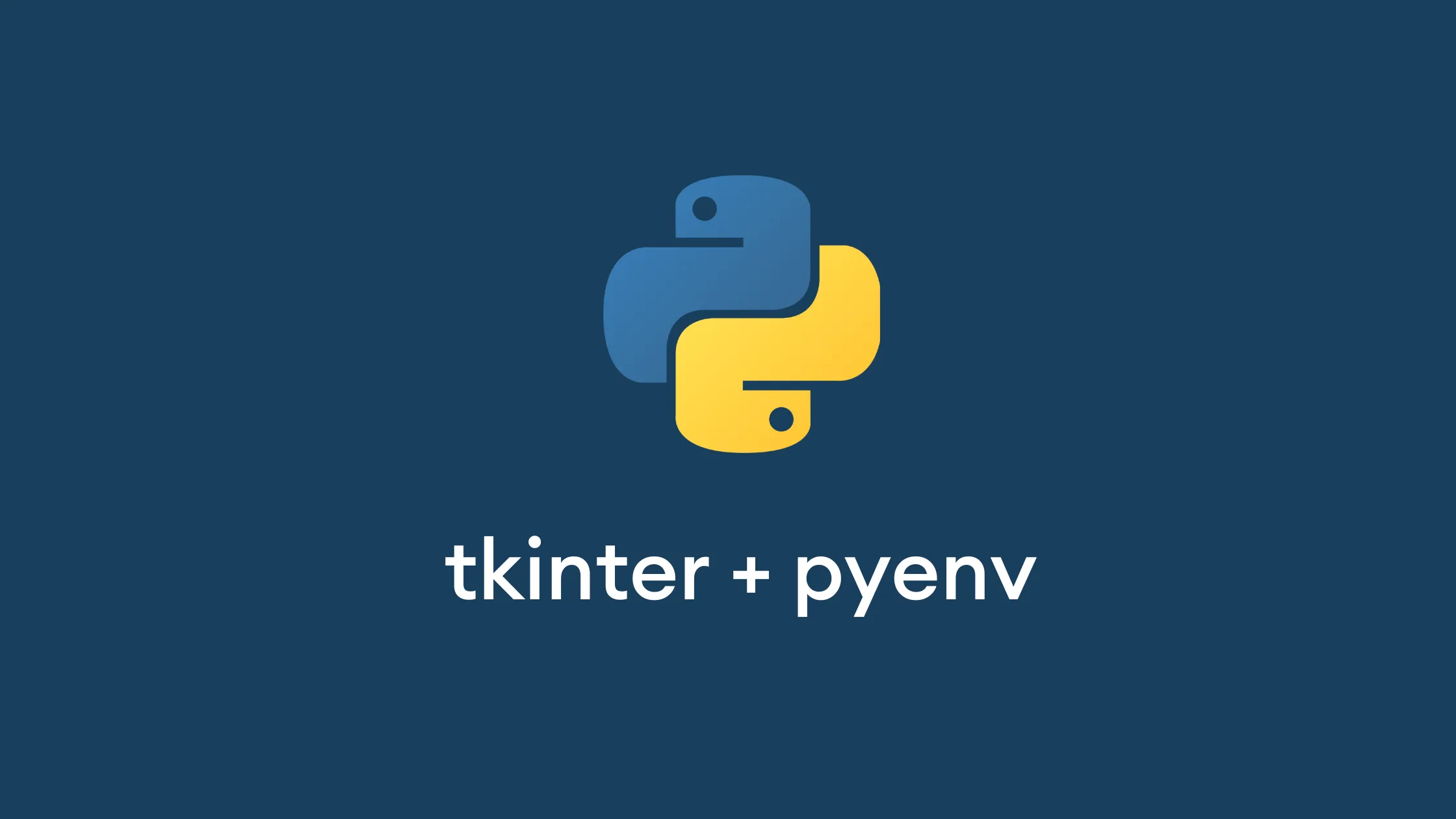I began a course taught by Christian Koch called “Learn Python by Building 10 Apps with tkinter”. I soon realized I couldn’t use tkinter even though it’s a built-in Python module. Wait, what?
Traceback (most recent call last): File "/Users/maxshapira/Development/public/tkinter-basics/main.py", line 1, in <module> import tkinter as tk File "/Users/maxshapira/.pyenv/versions/3.11.0/lib/python3.11/tkinter/__init__.py", line 38, in <module> import _tkinter # If this fails your Python may not be configured for Tk ^^^^^^^^^^^^^^^ModuleNotFoundError: No module named '_tkinter'Well, if you use pyenv to manage your Python versions (which you should), you’ll run into this issue. I spent a lot of time trying to figure out the right solution, so I wanted to share it with you.
Step 1: Installing Necessary System Packages
Using tkinter with pyenv can be tricky due to missing dependencies.
First, let’s make sure we have installed the necessary system packages for tkinter.
In most Linux systems, you can install them with the following commands:
sudo apt-get updatesudo apt-get install tk-devOn macOS, you can use Homebrew to achieve the same:
brew install tcl-tkStep 2: Linking the Correct Tcl/Tk Versions
Next, make sure you link the correct versions of Tcl/Tk when installing Python. pyenv builds Python in your environment, but if you don’t have the required dependencies, like the Tk/Tcl libraries, it’ll build Python without them.
If the Python version you want to use is already installed on your system, you’ll need to uninstall it before proceeding. For example:
pyenv uninstall 3.11.3When installing a new Python version with pyenv, use the following commands:
For Linux:
sudo apt-get install -y make build-essential libssl-dev zlib1g-dev libbz2-dev \libreadline-dev libsqlite3-dev wget curl llvm libncurses5-dev libncursesw5-dev \xz-utils tk-dev libffi-dev liblzma-dev python-openssl git
env PYTHON_CONFIGURE_OPTS="--enable-shared" pyenv install <version>For macOS, after installing tcl-tk with brew:
brew install openssl readline sqlite3 xz zlib
env LDFLAGS="-L$(brew --prefix [email protected])/lib -L$(brew --prefix readline)/lib -L$(brew --prefix sqlite3)/lib -L$(brew --prefix xz)/lib -L$(brew --prefix zlib)/lib -L$(brew --prefix tcl-tk)/lib" \CPPFLAGS="-I$(brew --prefix [email protected])/include -I$(brew --prefix readline)/include -I$(brew --prefix sqlite3)/include -I$(brew --prefix xz)/include -I$(brew --prefix zlib)/include -I$(brew --prefix tcl-tk)/include" \PKG_CONFIG_PATH="$(brew --prefix [email protected])/lib/pkgconfig:$(brew --prefix readline)/lib/pkgconfig:$(brew --prefix sqlite3)/lib/pkgconfig:$(brew --prefix xz)/lib/pkgconfig:$(brew --prefix zlib)/lib/pkgconfig:$(brew --prefix tcl-tk)/lib/pkgconfig" \pyenv install <version>Replace <version> with the version of Python you want to install. After that, you should be able to import tkinter in your pyenv Python environment.
These steps should help you fix the tkinter and pyenv issue.
Note
I couldn’t get tkinter to work with pyenv on Python 3.11.0, but it worked perfectly on 3.11.2.
